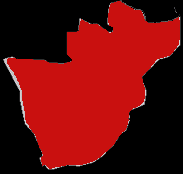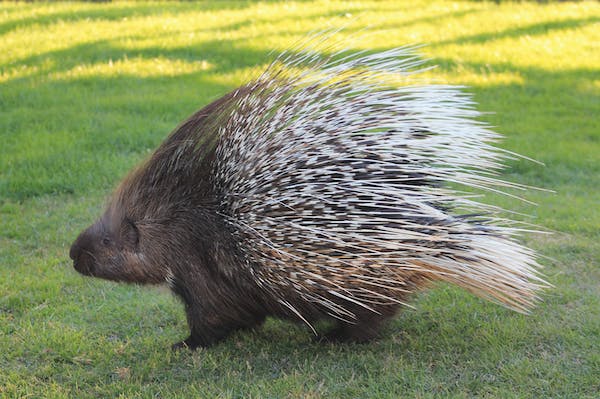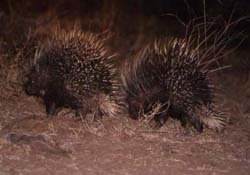SIZE: Length 84 cm, mass 17 kg.
COLOUR: White and black-ringed quills and spines cover flanks, tail and upper parts of the body. The head carries a crest of flexible black spines with white tips. The remainder of the body has coarse black hair, shading to brown in older animals.
GESTATION PERIOD: 6 - 7 weeks
POTENTIAL LONGEVITY: 20 years
MOST LIKE: Unlike any other animal.
HABITAT: A wide variety of habitats including mountains; not found in forests or dry desert.
Porcupines shelter in a cave or rock crevice, but if these are not available it will settle for a hole in the ground, such as the disused burrow of an aardvark. Porcupines are nocturnal, but can occasionally be seen during the day, sunning themselves outside their shelters. This animal is very shy and will disappear quickly if it is disturbed. They have the habit of using tracks to travel along, and are noisy animals, proceeding with much snuffling and grunting in addition to the noise of their quills scraping against obstacles, or their noisy chewing. They can cause severe destruction to maize, root and vegetable crops.
Porcupines gnaw on bones in order to provide them with added phosphorous and calcium, and bones often accumulate in their den. Cape porcupines are monogamous. Mating is a careful exercise: the female backs up to the male with her spiny tail raised vertically. They live in extended family groups, consisting of a male, female, and numerous offspring from consecutive litters. The average litter size is three.

WILDLIFE PARKS AND RESERVES WHERE THIS SPECIES IS FOUND:



